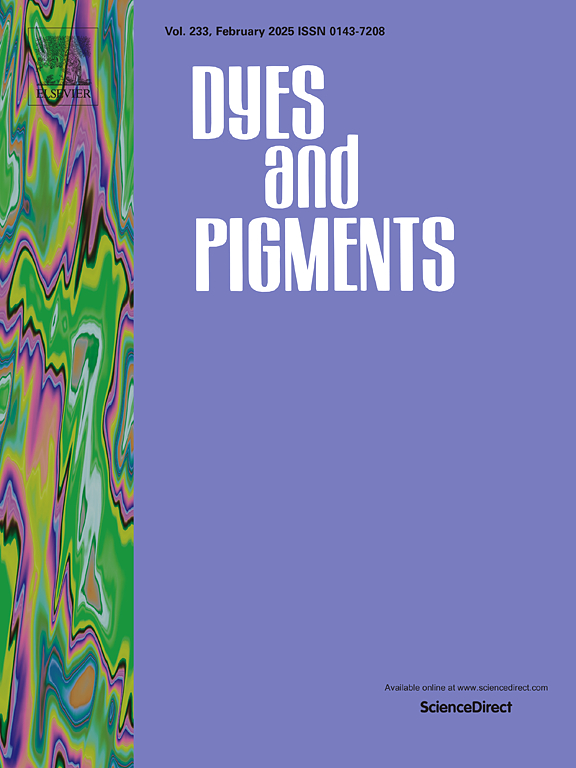Novel amyloid-β oligomer-targeted fluorescent probes by introducing branched chain into push-pull type dye
IF 4.1
3区 工程技术
Q2 CHEMISTRY, APPLIED
引用次数: 0
Abstract
Amyloid-β (Aβ) oligomer is one of the major targets for the diagnosis and treatment of Alzheimer's disease (AD). Therefore, the development of useful methods to selectively detect Aβ oligomers is needed. In this study, we newly designed and synthesized four fluorescent probes (DBP) that contained a branched chain in the scaffold of push-pull type dyes targeting Aβ fibrils, and evaluated their utility for the detection of Aβ oligomers. All DBP derivatives showed higher fluorescence intensity with Aβ oligomers than Aβ fibrils. Among them, DBP-2 clearly stained Aβ oligomers in the brain section of an AD model mouse. The results of the docking study indicate that DBP-2 interacted with the hydrophobic region in the Aβ trimer structure. In an ex vivo study using the AD model mouse, DBP-2 penetrated the blood-brain barrier and bound to not only Aβ fibrils but also Aβ oligomers, although it also bound to other intracellular components. The results suggest that DBP-2 is effective as a fluorescent probe targeting Aβ oligomers.

求助全文
约1分钟内获得全文
求助全文
来源期刊

Dyes and Pigments
工程技术-材料科学:纺织
CiteScore
8.20
自引率
13.30%
发文量
933
审稿时长
33 days
期刊介绍:
Dyes and Pigments covers the scientific and technical aspects of the chemistry and physics of dyes, pigments and their intermediates. Emphasis is placed on the properties of the colouring matters themselves rather than on their applications or the system in which they may be applied.
Thus the journal accepts research and review papers on the synthesis of dyes, pigments and intermediates, their physical or chemical properties, e.g. spectroscopic, surface, solution or solid state characteristics, the physical aspects of their preparation, e.g. precipitation, nucleation and growth, crystal formation, liquid crystalline characteristics, their photochemical, ecological or biological properties and the relationship between colour and chemical constitution. However, papers are considered which deal with the more fundamental aspects of colourant application and of the interactions of colourants with substrates or media.
The journal will interest a wide variety of workers in a range of disciplines whose work involves dyes, pigments and their intermediates, and provides a platform for investigators with common interests but diverse fields of activity such as cosmetics, reprographics, dye and pigment synthesis, medical research, polymers, etc.
 求助内容:
求助内容: 应助结果提醒方式:
应助结果提醒方式:


